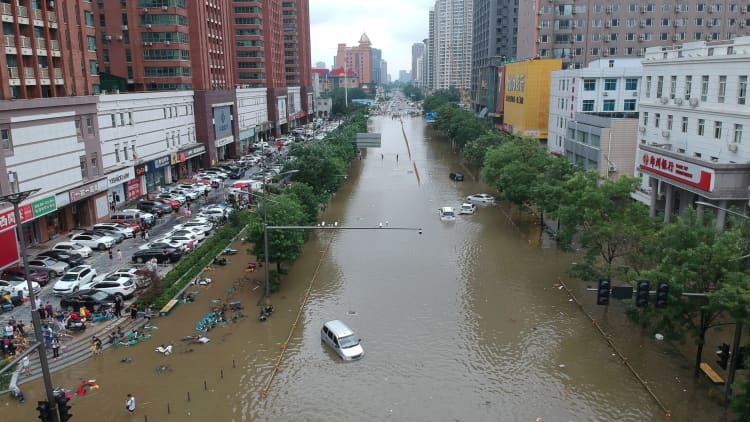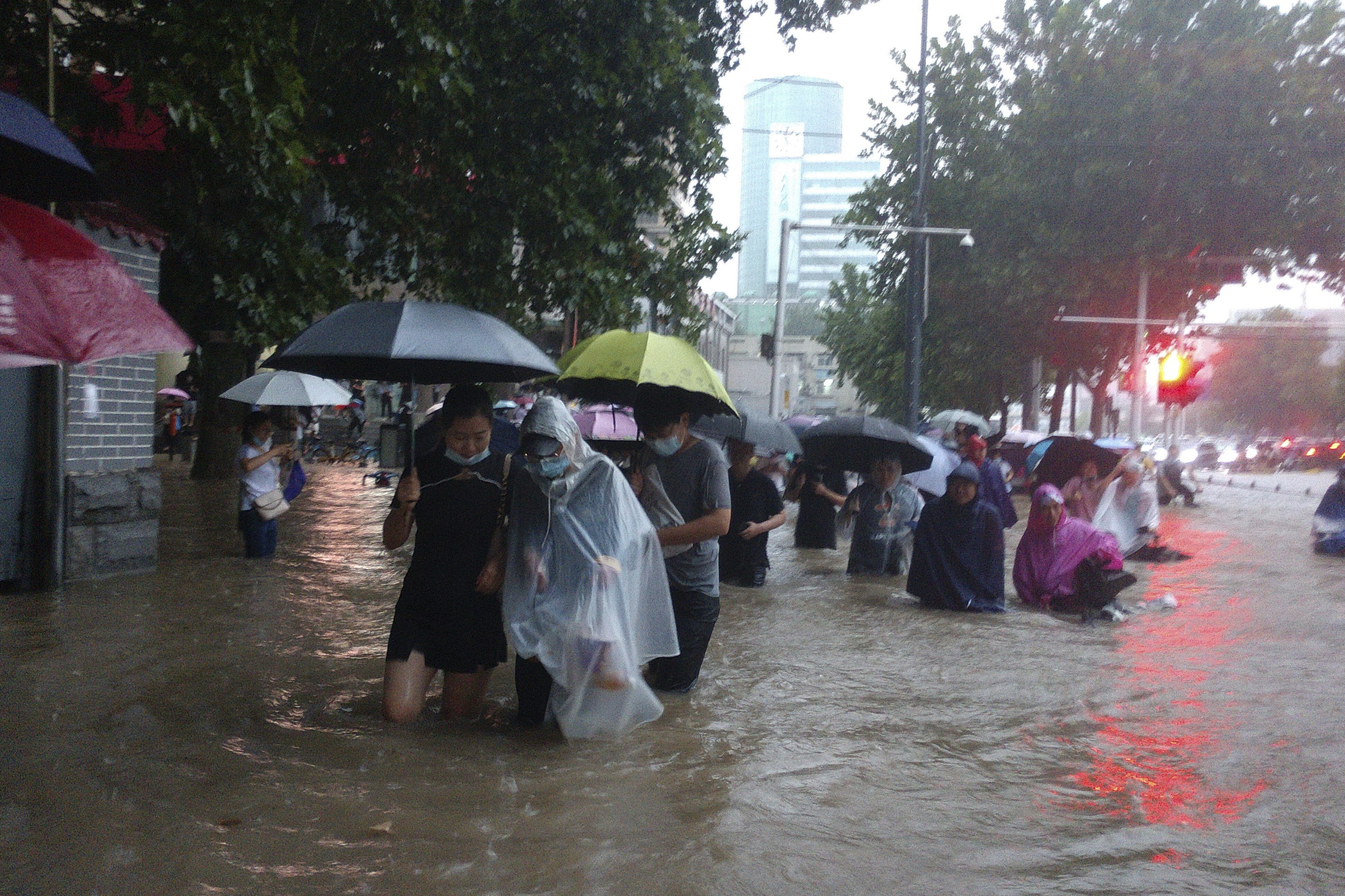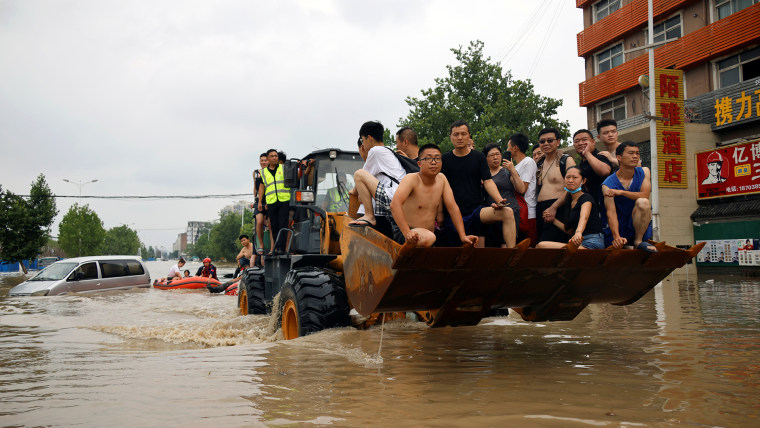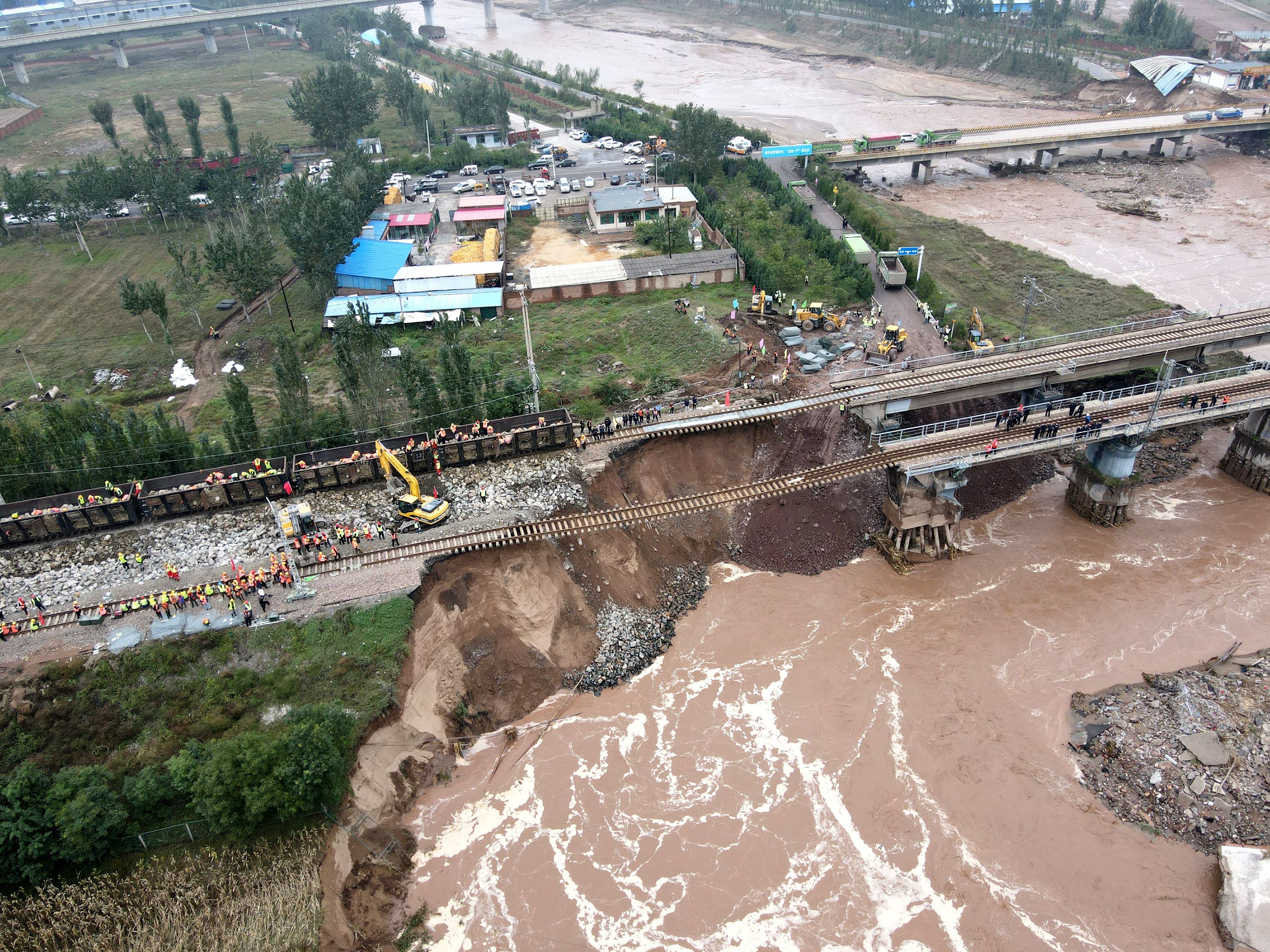Catastrophic Floods Devastate Northern China, Urgent Red Alert Issued

Catastrophic Floods Devastate Northern China, Urgent Red Alert Issued
In an extremely severe disaster, a massive storm hit northern China, bringing heavy rains, strong winds, and destructive floods that washed away cars and engulfed vast areas. The situation remains critical, and authorities have issued a red alert, urging residents to act immediately to protect themselves and their belongings.

Over the last 48 hours, the storm caused widespread destruction. Streets that were once busy are now flooded rivers, and calm neighborhoods turned into scenes of devastation. Emergency services and disaster response teams are working hard to face the enormous challenges posed by this harsh weather.
Reports from the affected areas tell us the situation is dire. Many cars have been swept away by the powerful floodwaters, blocking roads and cutting off essential supply routes. People who weren’t prepared for the storm are now stranded, seeking safety on rooftops and elevated places as the water levels continue to rise.
The northern provinces of China, like Hebei, Shanxi, and Inner Mongolia, have been hit the hardest. Local authorities are working around the clock to coordinate rescue efforts and provide help to those affected. The Chinese government, led by Premier Li Keqiang, is sending additional resources to support the response and recovery operations.

The storm’s impact extends beyond towns and cities; agricultural regions have also suffered greatly. Large areas of farmland are underwater, and important crops have been destroyed, raising concerns about possible food shortages in the coming months. Experts are already assessing the damage and developing plans to reduce the impact on food production.
Moreover, the storm has caused significant damage to infrastructure, making the situation even more challenging. Bridges have collapsed, leaving communities isolated, and power lines have fallen, causing widespread power outages. Communication networks have also been severely affected, making it difficult for disaster response teams to coordinate their efforts.
In response to the crisis, the Chinese Red Cross Society and other aid organizations are providing medical assistance and relief supplies to those affected. Temporary shelters are being set up to accommodate those who have lost their homes, and essential items such as food, water, and blankets are being distributed to those in need.
The disaster has caught the attention of the international community, with neighboring countries offering support and condolences. Emergency aid from countries like Russia and Mongolia has started to arrive to help China in its recovery efforts.

As rescue operations continue, the focus remains on saving lives and ensuring the safety of the brave first responders. Trained rescue teams are risking their lives to reach those stranded and provide much-needed help in hazardous conditions.
Meteorologists are attributing the severity of the storm to climate change, which is causing more extreme weather events around the world. Chinese officials are discussing strategies to improve disaster preparedness and response measures to better handle future challenges.
As the crisis unfolds, heartbreaking stories of loss and survival are emerging, showing the human toll of this natural disaster. Families have been separated, livelihoods destroyed, and cherished belongings lost in an instant, leading to sorrow and despair. However, stories of bravery, selflessness, and solidarity are also coming to light, demonstrating the power of humanity to unite in tough times. Strangers have become heroes, showing deep compassion and empathy to help those in need.
One of the foremost priorities will be to restore essential infrastructure, such as roads, bridges, and power networks, which are critical for reestablishing normalcy and facilitating access to affected communities. Rebuilding damaged homes and providing shelter for displaced individuals will also be a top concern. In doing so, incorporating resilient building techniques and disaster-resistant designs will be essential to better withstand future weather-related challenges.
Simultaneously, climate-conscious initiatives need to be prioritized to address the underlying issue of climate change and mitigate the risk of similar catastrophes in the future. Investing in climate adaptation measures, sustainable water management practices, and afforestation projects will help reduce the vulnerability of the region to extreme weather events.
Despite the challenges, the spirit of unity and resilience displayed by communities and rescue teams alike serves as a beacon of hope. The rebuilding process will be difficult, but the determination to restore normalcy and overcome adversity is unwavering.
In conclusion, northern China is facing the aftermath of a catastrophic storm that has caused devastating floods, destroying cars, homes, and farmland. The red alert underscores the seriousness of the situation, urging residents to take immediate action to protect themselves. The unwavering resolve and dedication of rescue teams and communities demonstrate the unyielding human spirit in the face of adversity. As the region embarks on its journey to recovery and rebuilding, international support and climate-conscious efforts will play crucial roles in ensuring a more resilient future for the affected communities.




